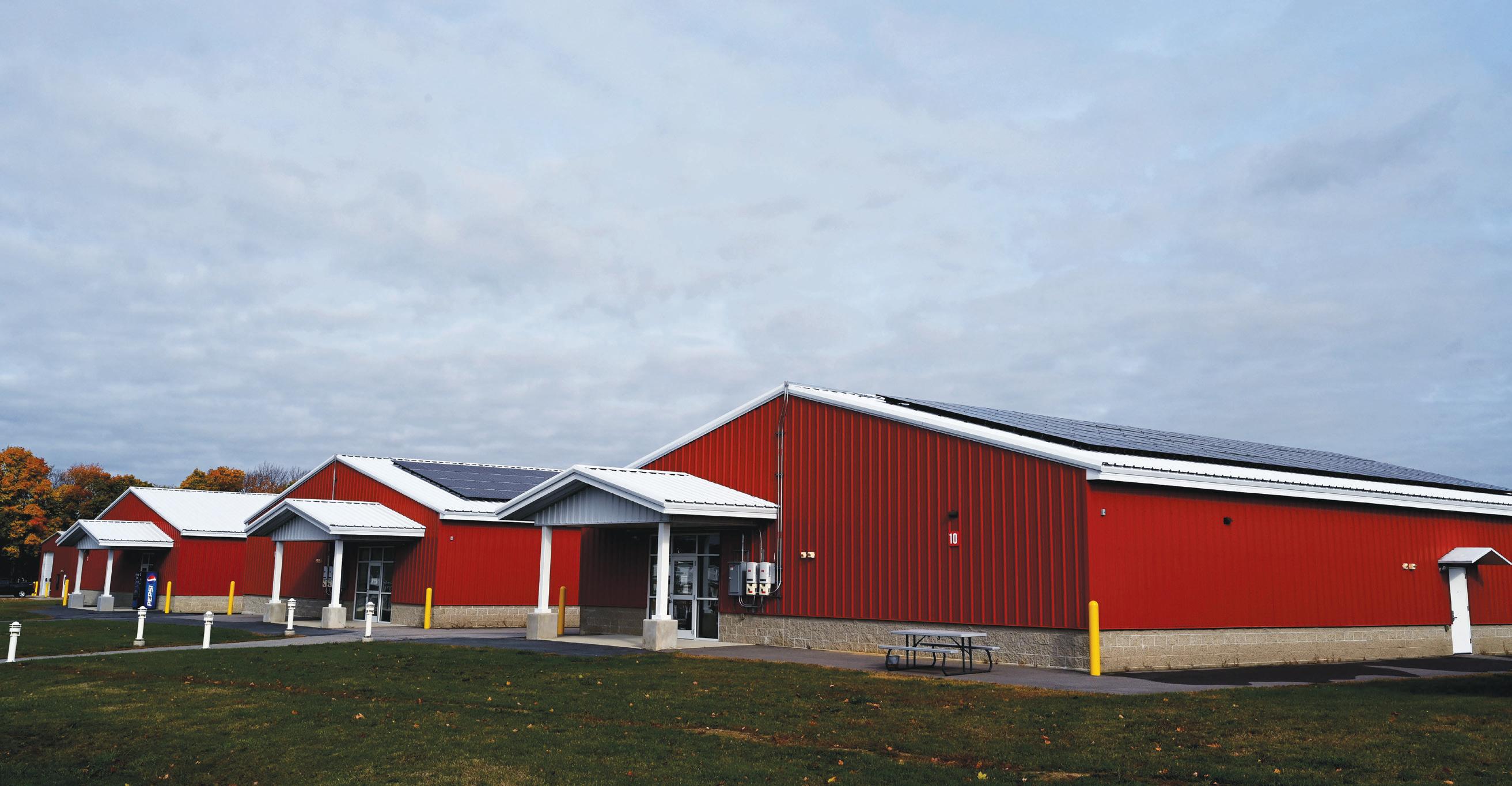
4 minute read
RUNNING OFF THE GRID
from More Work To Be Done
by Dave Horn
Story and photos by Staff Sgt. Charles Johnston, NHNG Deputy State PAO
Every fall, the Army highlights reducing energy consumption at our facilities at home and in theater, while increasing efficiency and reducing costs.
Advertisement
The New Hampshire National Guard makes this a point of emphasis year-round.
“A while ago, the Army started moving towards renewable energy and energy reduction in the military,” said Maj. Logan Kenney, design and construction branch chief. “So we focused on Center Strafford, our training site, trying to bring down the water and energy usage to net zero.”
Nestled amidst farmland, rolling hills and colonial-era houses, the Center Strafford site was once home to a scholastic academy established in the early 1900s. After the school closed its doors, the Guard acquired the sprawling 100-acre campus in the ‘80s.
Myriad renovations and improvements have been made to the property over the years, to include a shooting range and an obstacle course.
But only recently has a commitment to energy efficiency and resiliency been undertaken. Net-zero consumption was the desired end state: limiting energy usage equal to or less than the amount of renewable energy created on site. As plans developed, goals were adjusted slightly to align with current technologies and expected energy consumption.
“It’s not really achievable to be net zero in the military, because you’re always using energy from somewhere,” Kenney said. “We have training needs. We can’t actually have a building not function and meet our requirements for computers, digital trainers, etc., so we focused on near net zero. We’re trying to do it for the campus by doing that with renewable energies and focusing on solar panels, primarily.”
The project first added photovoltaic (PV) arrays of solar panels to the rooftops of five structures. A massive ground-mounted system was then erected near the outdoor shooting range. Around campus, even streetlamps were affixed with small PV panels.
Energy credits are accrued through a local power company for every kilowatt generated by the solar arrays. At a cost of about $3 million, the return on investment is expected to take about 21 years. But the option exists to power directly from the panels, if necessary.
“There is enough [energy] to offset at least one of the buildings in operation,” Kenney said.
That one building is the site’s maintenance and operations center, a 3,000-square-foot structure known as Cooper House.
“Cooper House was the final phase for the solar that’s currently installed out there,” said Warrant Officer Ben Stevens, construction project manager. “We wanted to bundle it all together and put it into a building where it was easily measurable against that near net-zero kind of concept. Anything that’s produced in those solar panels on the rest of the site, in theory, offsets the power requirement and consumption of just Cooper House.”
To be a worthy recipient of the site’s solar energy production, big changes were in order.
“It was basically a full renovation of the building to make it more superiorly insulated,” said Ken Coombs, state architect.
The 2018 renovation was deemed an essential part of the plan, which stripped the old house right down to the studs.
“The near net zero doesn’t just come from the production of the solar balance production consumption of that building,” Stevens explained. “It’s a combination. It’s an equation of everything we’ve done in that building. The walls were spray foamed. There’s a full-building envelope. There is no thermal break in that building or thermal conductivity from the inside to the outside, to include underneath the floors in many of the renovated spaces. And that makes it a tighter building.”
So tight in fact that specific air-exchange and ventilation units were installed just get inside.
The New Hampshire National Guard Training Site in Center Strafford rests on a sprawling 100-acre lot that was formerly a scholastic academy built in the early 1900s. The facility is moving toward energy resiliency with myriad renovations to reduce its dependence on fossil fuels.
continues on next page
“If you were to go inside that building on a high or a low-pressure day, you would have to force the door open, because it almost creates its own little vacuum inside it,” Stevens said.
The heating, ventilation and air conditioning system was also replaced with electric heat pumps, which basically employ technology similar to air conditioners and refrigerators. “There’s no fossil fuel consumption in that building,” Stevens boasted. “We disconnected all the propane tanks.”
Moving forward, the next phase of the plan entails installation of a 50,000-gallon water tank and an on-site treatment system, Kenney said. No outside resources will be needed to operate it.
The not-too-distant future might also employ wind power. But for now, preliminary studies suggest conventional wind turbines won’t maximize airflows distorted by nearby Parker Mountain.
“The wind changes direction too often,” Kenney said. “Because it keeps moving degrees and speed, we could get wind, but we would not harvest enough energy to warrant the cost of a project.”
In the meantime, the site’s PV panel production versus the exact energy consumption of Cooper House is being analyzed and evaluated with new, high-tech software. And while near net zero is the still the target, the future holds loftier goals.
“Theoretically to run completely off the grid, that’s sort of what we were looking towards,” Kenney said.

The “Cooper House” has been repurposed as the operations center of the NHNG Training Site in Center Strafford. The old 3,000-square-foot farmhouse was retrofitted with new windows, heavy spray foam insulation and heat pumps that enables it to run off just the solar electricity produced on site.
Photovoltaic panels are affixed to training bays at the NHNG Training Site in Center Strafford. The panels produce enough power to run the facility’s operation center, known as Cooper House.











